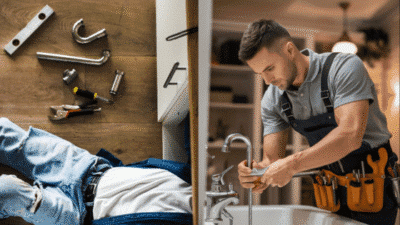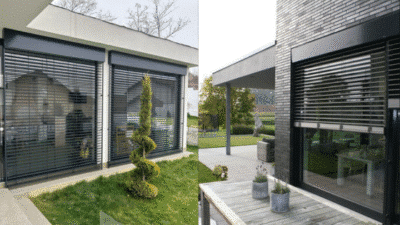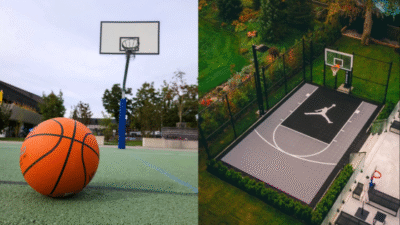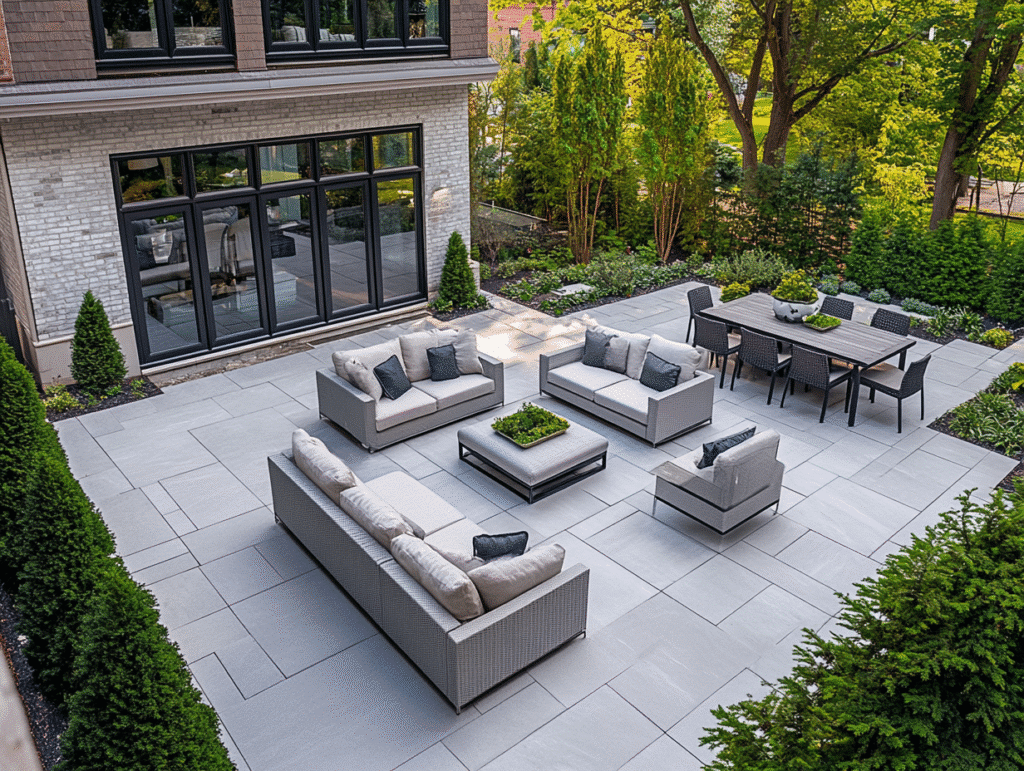
When I first designed an outdoor patio space I thought outdoor furniture was just indoor furniture that got rained on occasionally. What a rookie mistake! I remember my first “patio design” – a plastic table from the hardware store, two mismatched chairs I found at a garage sale, and a citronella candle that smelled like a chemical factory. I called it my “outdoor oasis.” My wife called it an eyesore.
Fast forward nearly two decades, and I’ve learned that creating a stylish patio retreat is like conducting a symphony – every element needs to work in harmony. Your outdoor space has the potential to become the crown jewel of your property, a place where morning coffee tastes better, dinner parties become legendary, and you can escape the chaos of indoor life without leaving your backyard.
The art of outdoor living isn’t about throwing money at expensive accessories (though quality pieces certainly help). It’s about understanding how different elements – furniture, plants, lighting, decor – work together to create a space that feels both stylish and genuinely livable. Trust me, I’ve made every mistake in the book, and I’m here to help you avoid them.
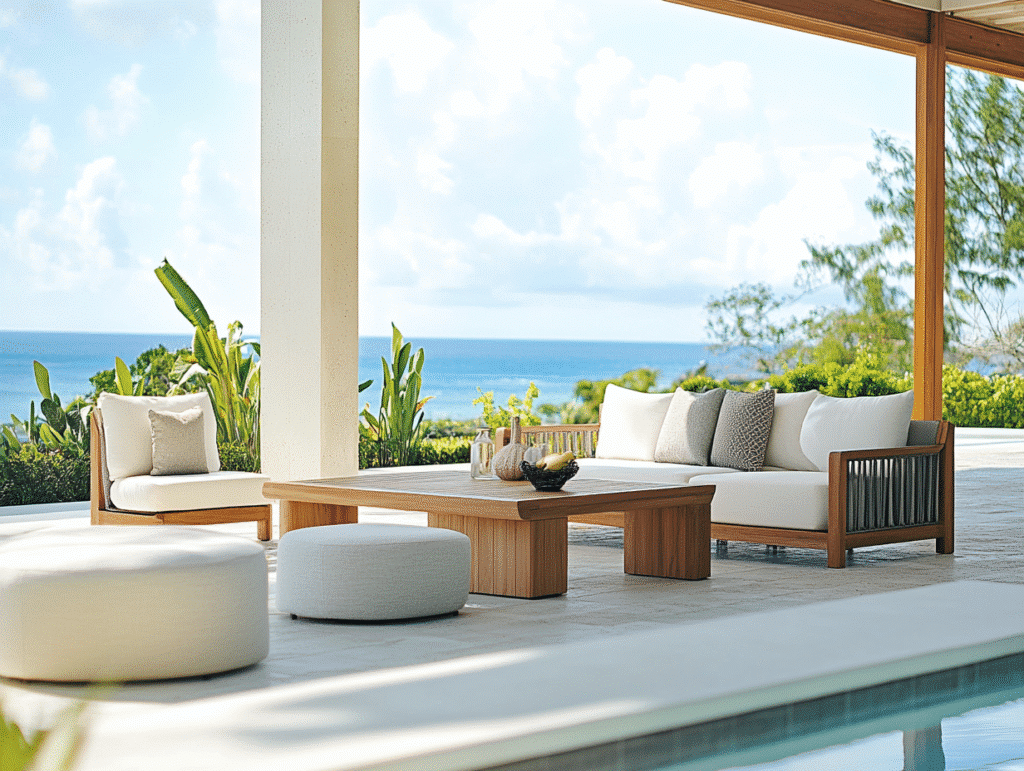
My Essential Highlights for Patio Design
Before we dive into the nitty-gritty details, let me share the core principles I’ve discovered through years of helping homeowners create their dream outdoor spaces:
• Layout determines everything – The way you arrange your space makes the difference between a cramped afterthought and a seamless extension of your home that flows naturally
• Weather-resistant doesn’t mean style-resistant – Modern outdoor furniture combines durability with stunning design, so you never have to choose between longevity and aesthetics
• Lighting transforms your entire experience – The right illumination turns your patio from a daytime-only space into an enchanting evening retreat that rivals any indoor room
• Plants are your secret weapon for atmosphere – Strategic greenery creates natural boundaries, adds color, and makes your patio feel like a private sanctuary
• Comfort is absolutely non-negotiable – If your guests can’t relax, all the style in the world won’t matter; prioritize seating that invites people to linger
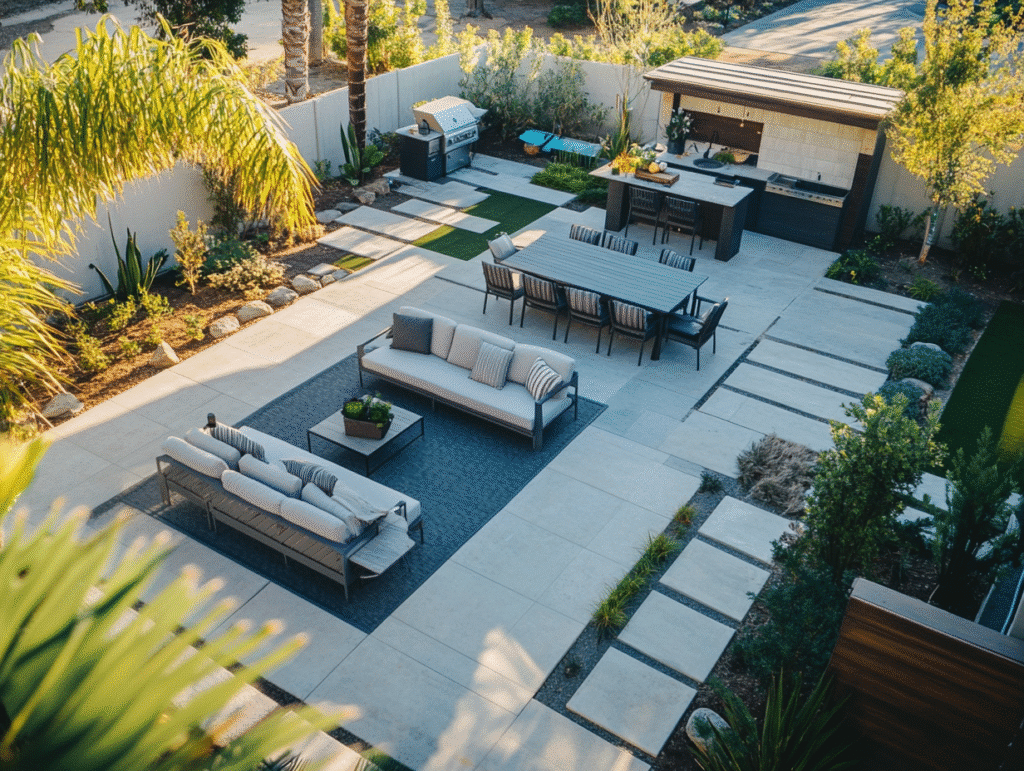
Choosing the Right Patio Layout and Design
Let me tell you about my biggest early fail. Back in 2009, I helped a client arrange their patio furniture in what I thought was a perfectly symmetrical pattern. Two chairs here, a table there, everything evenly spaced like a furniture showroom floor. The result? It looked great in photos but felt like sitting in a doctor’s waiting room. Nobody wanted to spend time there because the layout completely ignored how people actually use outdoor spaces.
The average patio size has increased by 22% in the last decade, reaching 350 square feet, which gives you plenty of room to work with – but only if you plan thoughtfully. Your layout should create natural conversation zones while maintaining clear pathways for movement. I’ve found that the most successful patios have at least three distinct areas: a main seating zone, a dining space, and what I call a “transition zone” that connects your indoor and outdoor living spaces.
When planning your layout, think about the natural flow of foot traffic from your house to different areas of your yard. You don’t want guests having to navigate around furniture like they’re running an obstacle course. Create wide, clear pathways that feel intuitive.
The main seating area should be positioned to take advantage of your best views while providing some protection from prevailing winds. One layout trick I’ve learned is to angle your furniture slightly rather than placing everything parallel to your house walls. This creates a more dynamic, welcoming feel and often makes better use of your available space.
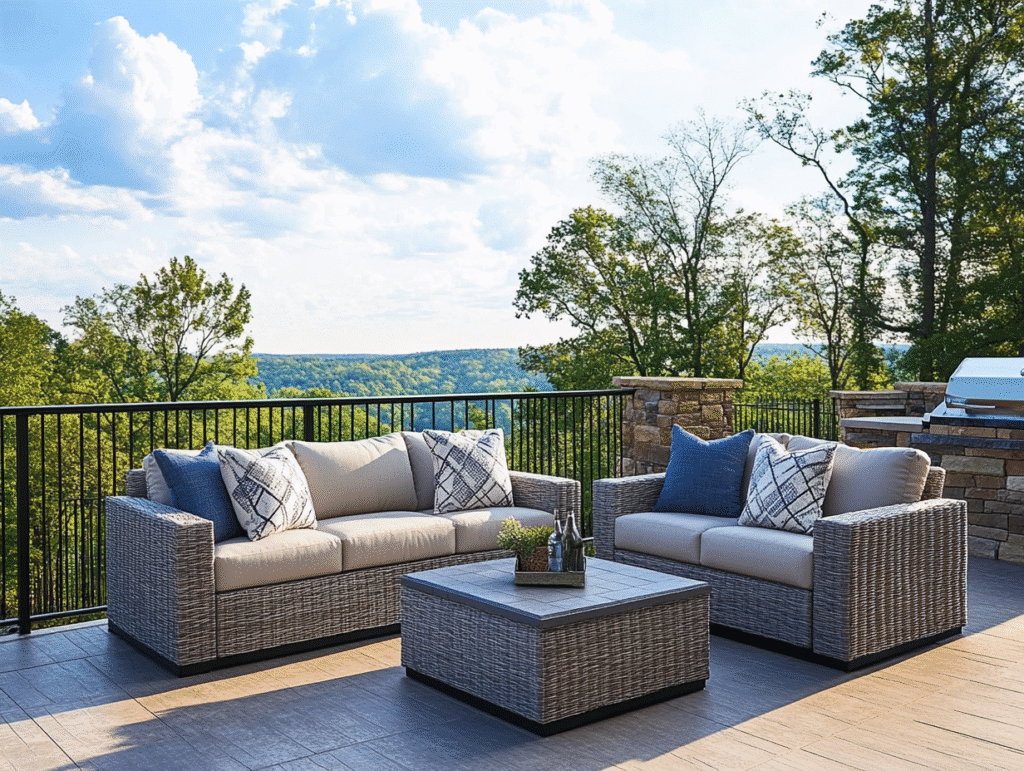
Selecting Stylish Furniture for Comfort and Durability
Here’s where I see homeowners make their biggest investment mistakes. Over 75% of homeowners invest in outdoor furnishings to enhance their patios, but many focus solely on price rather than considering the total value equation. I learned this lesson the hard way when I bought what I thought was a “great deal” on a patio set that looked fantastic for exactly one season before the cushions faded and the frames started showing rust.
What are the best patio furniture options? From my perspective, weather-resistant outdoor furniture has come incredibly far since those early days of basic plastic and flimsy aluminum. Today’s best pieces combine materials like powder-coated aluminum, all-weather wicker, and solution-dyed fabrics that can withstand years of sun, rain, and temperature fluctuations without losing their appeal. Brands like Lloyd Flanders have perfected the art of creating furniture that’s both beautiful and built to last.
When selecting seating, comfort should be your top priority. I always tell clients to actually sit in furniture before buying it – and not just for thirty seconds. Spend at least ten minutes in each piece. Does the back support feel right? Are the armrests at a comfortable height? Can you easily get in and out?
Modular furniture systems have become game-changers for patio design. These pieces allow you to reconfigure your seating arrangement based on the occasion. Hosting an intimate dinner for four? Push the pieces together for cozy conversation. Throwing a larger party? Spread them out to accommodate more guests.
Don’t overlook storage when selecting furniture. Ottoman-style pieces that open up for storage, benches with built-in compartments, and side tables with shelving help keep your patio organized and functional. There’s nothing that kills the ambiance faster than having to trek inside every time you need cushions, games, or entertaining supplies. Incorporating Greenery and Plants for Natural Atmosphere
Plants are where the magic really happens. They’re the difference between a patio that feels like an outdoor room and one that feels like you’re sitting in a parking lot. But here’s what I wish someone had told me years ago: not all plants are suitable for a patio retreat, and placement is absolutely critical.
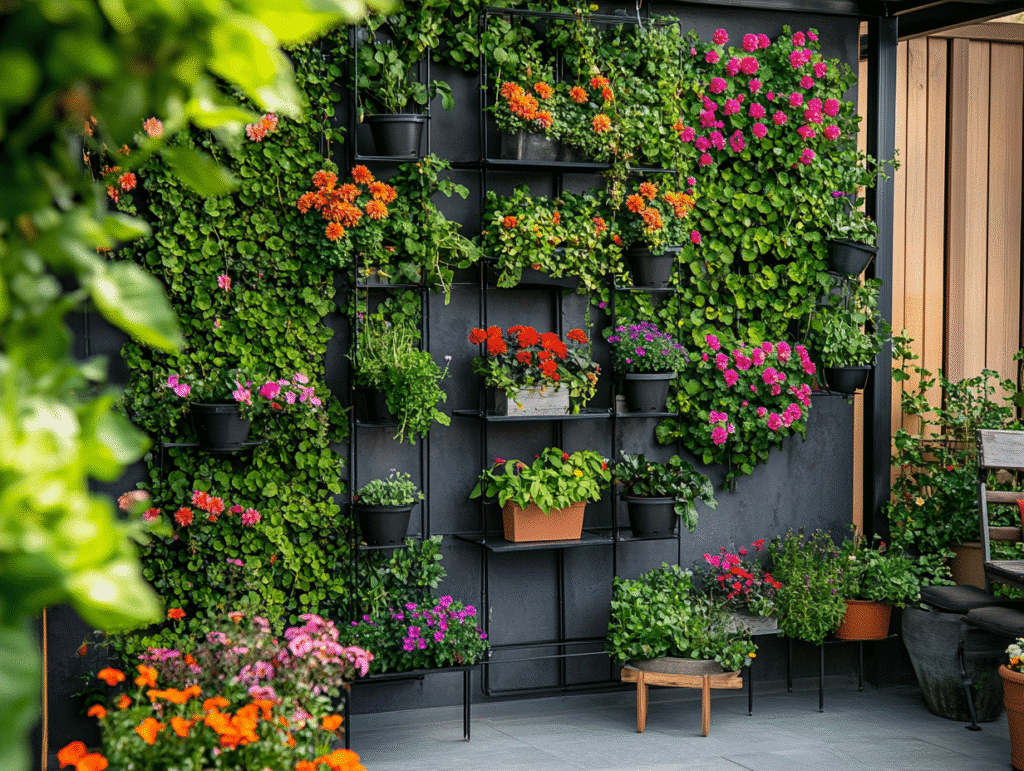
What plants are suitable for a patio retreat? Container gardening gives you incredible flexibility for patio spaces. You can move plants around to experiment with different arrangements, bring sensitive varieties indoors during harsh weather, and easily refresh your look with seasonal changes. I’ve found that mixing different container sizes and heights creates visual interest while avoiding the “lined up soldiers” look that screams amateur.
For year-round appeal, focus on plants with interesting foliage rather than just flowers. Ornamental grasses, hostas, and evergreen shrubs provide structure and color even when nothing’s blooming. Then layer in seasonal flowers and herbs for pops of color and fragrance. There’s something incredibly satisfying about snipping fresh basil or rosemary for your outdoor cooking.
Vertical gardening has become one of my favorite solutions for smaller patios. Wall-mounted planters, trellises with climbing vines, and tiered plant stands help you maximize your greenery without sacrificing floor space. A living wall can also provide privacy screening if your patio feels too exposed to neighbors.
Consider the mature size of your plants when planning. That cute little shrub might seem perfect now, but if it’s going to grow into a six-foot monster that blocks your view or overwhelms your space, you’ll regret the choice later.
Creating Cozy Ambiance with Lighting
Lighting might be the most underestimated element of patio design, but it’s also the most transformative. What lighting works well for patios? The right lighting can extend your outdoor season well into the evening hours and create an atmosphere that makes your patio feel like a high-end resort.
String lights have become incredibly popular, and for good reason – they’re relatively inexpensive, easy to install, and create instant ambiance. But here’s the key: layer your lighting just like you would indoors. String lights provide general illumination, but you’ll also want task lighting for dining and reading, plus accent lighting to highlight architectural features or beautiful plants.
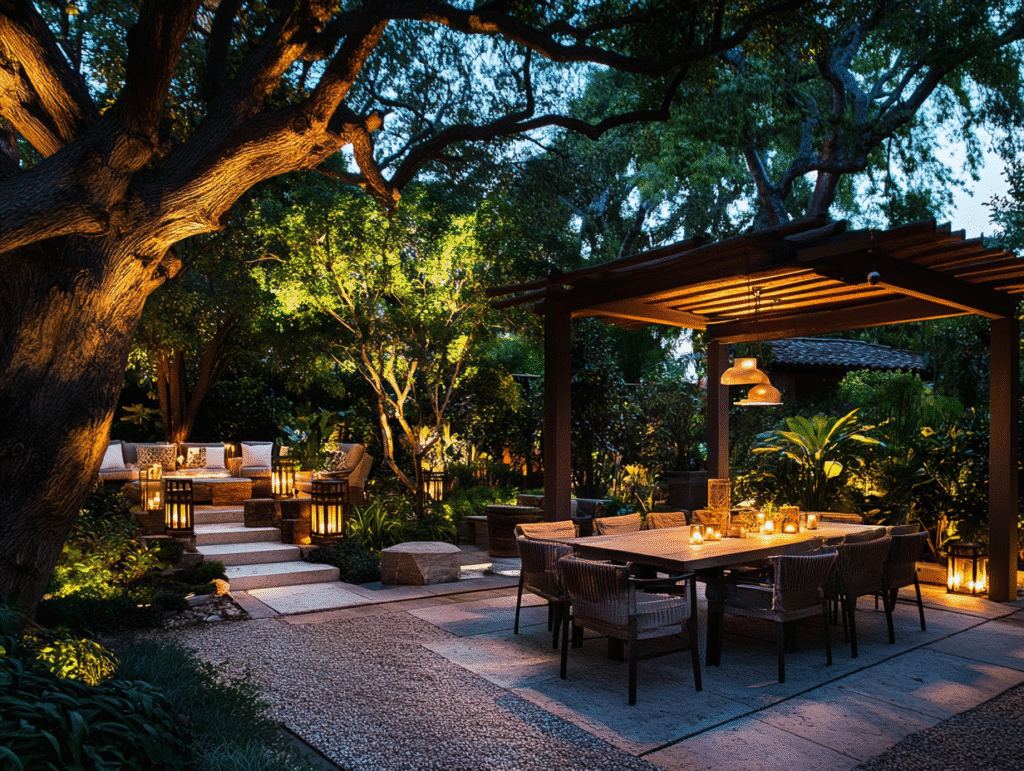
Solar lighting has improved dramatically in recent years. Modern solar fixtures can provide surprisingly bright, consistent light without the hassle of running electrical lines. They’re perfect for pathway lighting, accent lighting around plants, or even as primary lighting for smaller spaces.
Candles and lanterns add a romantic, intimate feel that electric lighting can’t quite replicate. Battery-operated LED candles give you the flickering effect without worrying about wind or safety issues.
Don’t forget about uplighting and downlighting. Fixtures that shine up into trees or architectural features create dramatic shadows and depth. Downlighting from pergolas or overhangs provides functional illumination for dining and entertaining.
Adding Outdoor Rugs and Textiles for Warmth
How do I incorporate outdoor rugs in my design? Area rugs can define spaces and add warmth to patio designs, but outdoor textiles serve purposes beyond just aesthetics. They help define different zones within your patio, add color and pattern, and make hard surfaces feel more comfortable and inviting.
When I first started recommending outdoor rugs, the options were pretty limited – mostly basic stripes in primary colors. Today’s outdoor textiles rival indoor options for style and sophistication. You can find everything from intricate Persian-inspired patterns to modern geometric designs in colors that won’t fade in the sun.
Size matters enormously with outdoor rugs. A too-small rug makes your furniture look like it’s floating in space. Your rug should be large enough that at least the front legs of your seating pieces sit on it. For dining areas, make sure the rug extends far enough that chairs remain on the rug even when pulled out from the table.
Outdoor cushions and pillows are where you can really have fun with color and pattern. Since they’re relatively inexpensive and easy to change, they’re perfect for experimenting with trends or seasonal updates. Look for solution-dyed fabrics that resist fading and mildew.
Outdoor curtains or drapes can add privacy, wind protection, and a luxurious resort-like feel. They’re especially effective on covered patios or pergolas.
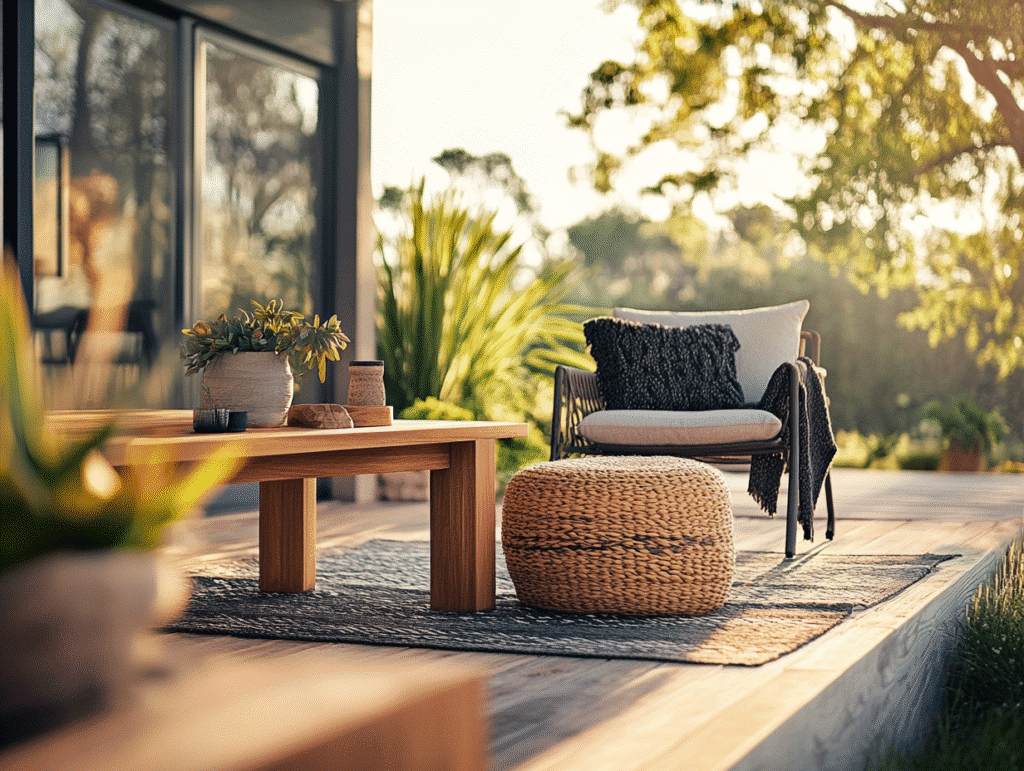
Designing an Outdoor Dining Area
Creating a dedicated dining space transforms your patio from a place to sit into a place to truly live. About 68% of people report spending more time outdoors due to improved patio designs, and a well-planned dining area is often the catalyst for this increased usage.
How do I design a comfortable outdoor seating area? The key to outdoor dining success is thinking beyond just a table and chairs. You need adequate lighting for evening meals, convenient access to your indoor kitchen, and storage for dining essentials. I’ve seen too many beautiful outdoor dining sets that rarely get used because the logistics weren’t thought through.
Table size and shape should match your typical entertaining style. Round tables encourage conversation and work well for smaller groups, while rectangular tables can accommodate more people and work better for buffet-style serving. Make sure you have at least 36 inches of clearance around the table for comfortable movement.
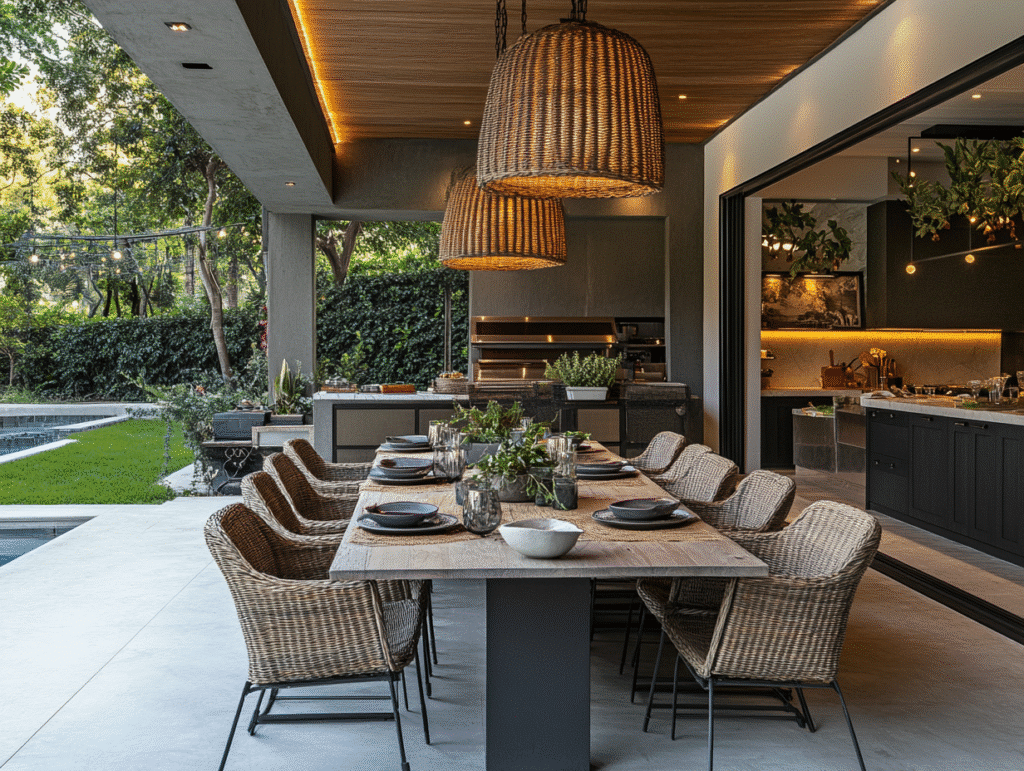
Weather protection is needed for dining areas. Whether it’s a pergola, umbrella, or retractable awning, you need some way to provide shade during hot days and protection from light rain.
Consider adding a serving station or outdoor kitchen elements near your dining area. Even something as simple as a weather-resistant cabinet for storing dishes, linens, and serving pieces can make outdoor entertaining much more enjoyable.
Building a Fire Pit or Outdoor Fireplace
Fire features have become the ultimate patio focal point, and I completely understand why. There’s something primal and mesmerizing about gathering around a fire that makes any outdoor space feel special. But before you start digging holes or shopping for fire bowls, you need to understand the practical considerations.
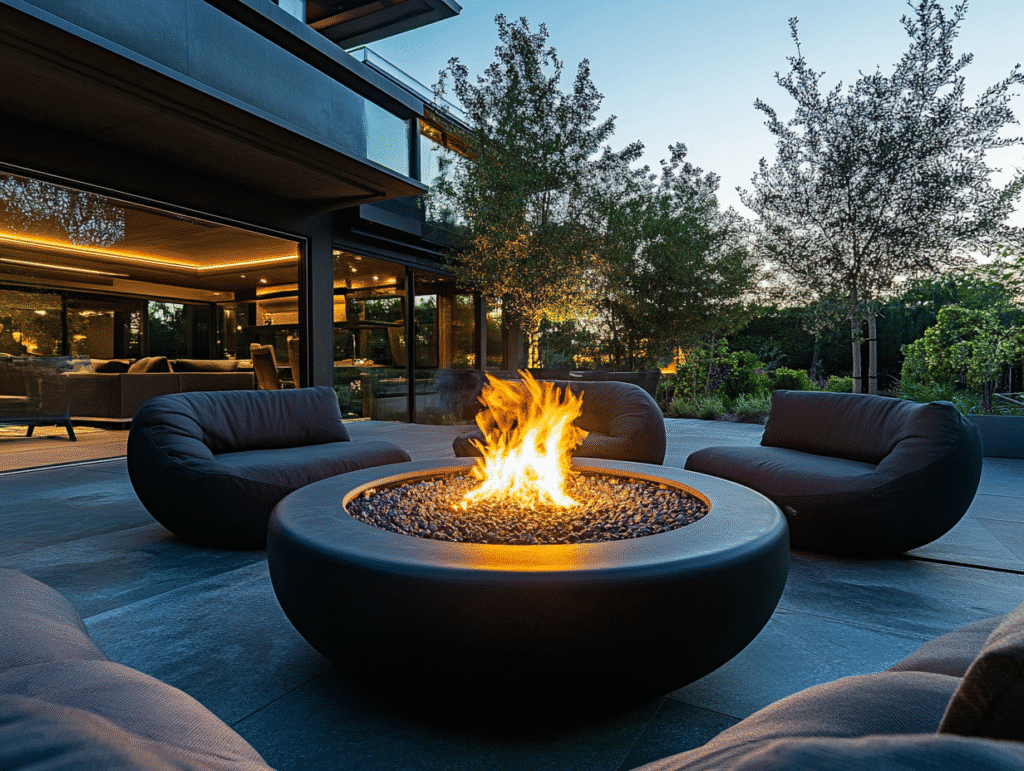
Safety and local regulations should be your first concern. Many municipalities have specific rules about fire features, including setback requirements from structures and property lines. Some areas prohibit open fires entirely during certain seasons.
Fire pits offer more flexibility than built-in fireplaces since they can be moved or removed if needed. Portable fire bowls are perfect for renters or anyone who wants to experiment with placement before committing to a permanent location. Gas fire pits provide instant flames without the mess of wood, while wood-burning options offer the authentic crackling sounds and smoky aroma that many people prefer.
The seating arrangement around your fire feature is important. People naturally want to face the fire, so plan your furniture layout accordingly.
Don’t forget about storage for fire-related supplies. Wood storage, fire tools, and safety equipment need convenient, weather-protected storage nearby.
Water Features for Tranquility
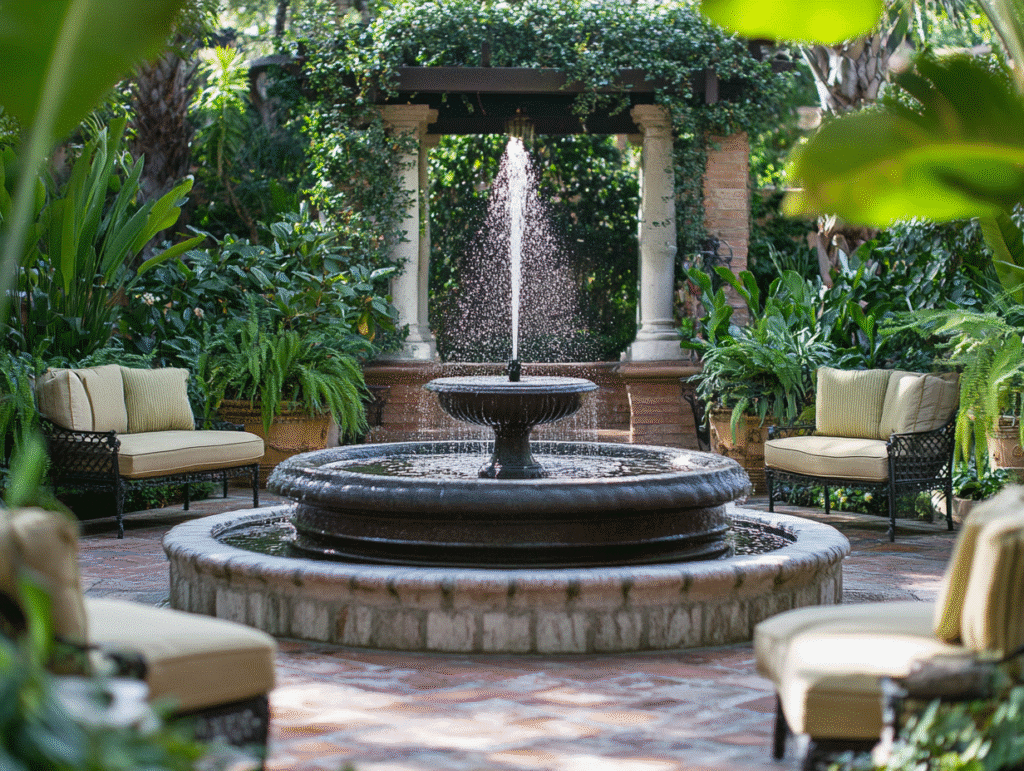
Water features might seem like a luxury, but they serve practical purposes beyond just looking beautiful. The sound of moving water masks traffic noise and creates a sense of privacy even in urban settings. A study found that well-designed outdoor spaces can reduce stress levels by up to 60%, and water features play a significant role in this calming effect.
Fountains are the most popular water feature for patios because they’re relatively easy to install and maintain. Self-contained units don’t require plumbing connections – just access to electricity and occasional water refills.
Pond features can work beautifully on larger patios, especially if you incorporate aquatic plants and perhaps even fish. However, they require more maintenance and planning than fountains.
Wall-mounted water features are perfect for smaller spaces or patios where floor space is at a premium. They provide the visual and auditory benefits of water without taking up real estate.
Seasonal Decor Ideas
One of the biggest advantages of outdoor living is the opportunity to celebrate the changing seasons in ways that indoor spaces simply can’t match. Seasonal decorating keeps your patio feeling fresh and gives you reasons to spend time outdoors year-round.
Are there specific color schemes for patio decor? Spring is all about celebrating new growth and fresh beginnings. Swap out heavy winter textiles for lighter fabrics in fresh colors. Add containers of spring bulbs and early flowering plants.
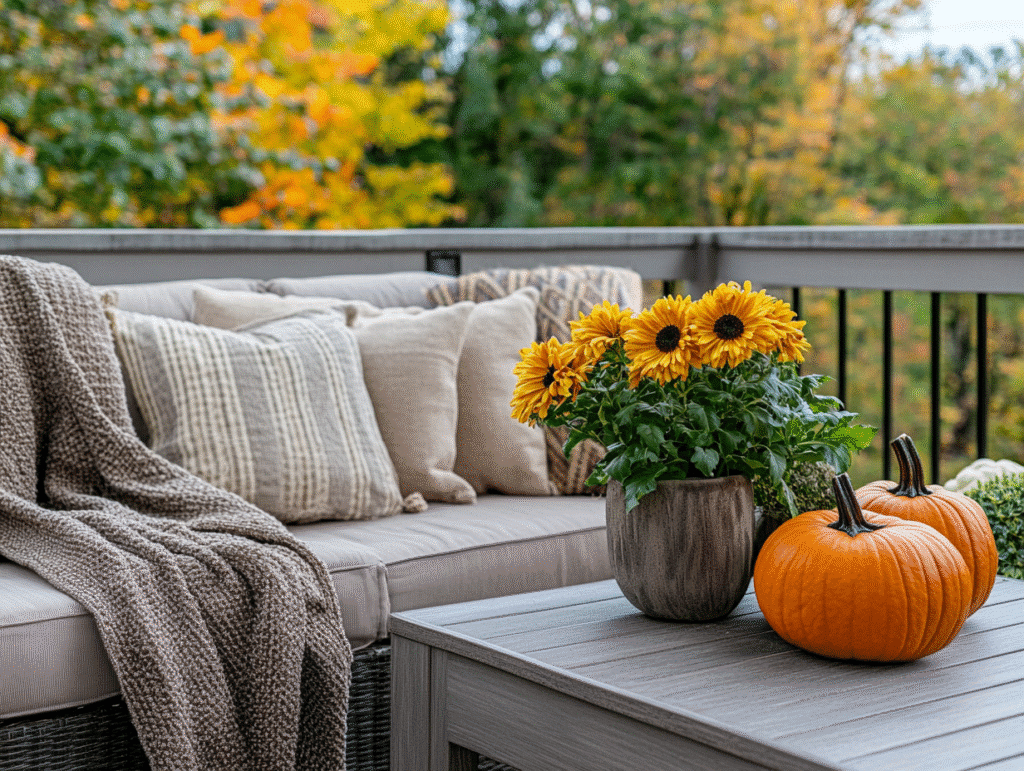
Summer decorating should focus on comfort and cooling. Light-colored fabrics reflect heat, while darker colors absorb it. Add extra shade elements like umbrellas or shade sails.
Fall offers incredible opportunities for rich, warm decorating. Mums, ornamental cabbages, and pumpkins create classic autumn appeal. This is also the season to add cozy elements like throw blankets.
Winter doesn’t mean abandoning your patio entirely. Evergreen plants, winter-blooming varieties, and seasonal decorations can keep your space attractive even in colder months.
Tips for Year-Round Use of Your Patio
What are some DIY ideas for outdoor living spaces? The goal of any well-designed patio should be year-round usability, even if that means different types of use in different seasons. With thoughtful planning, your outdoor space can provide value and enjoyment regardless of weather conditions.
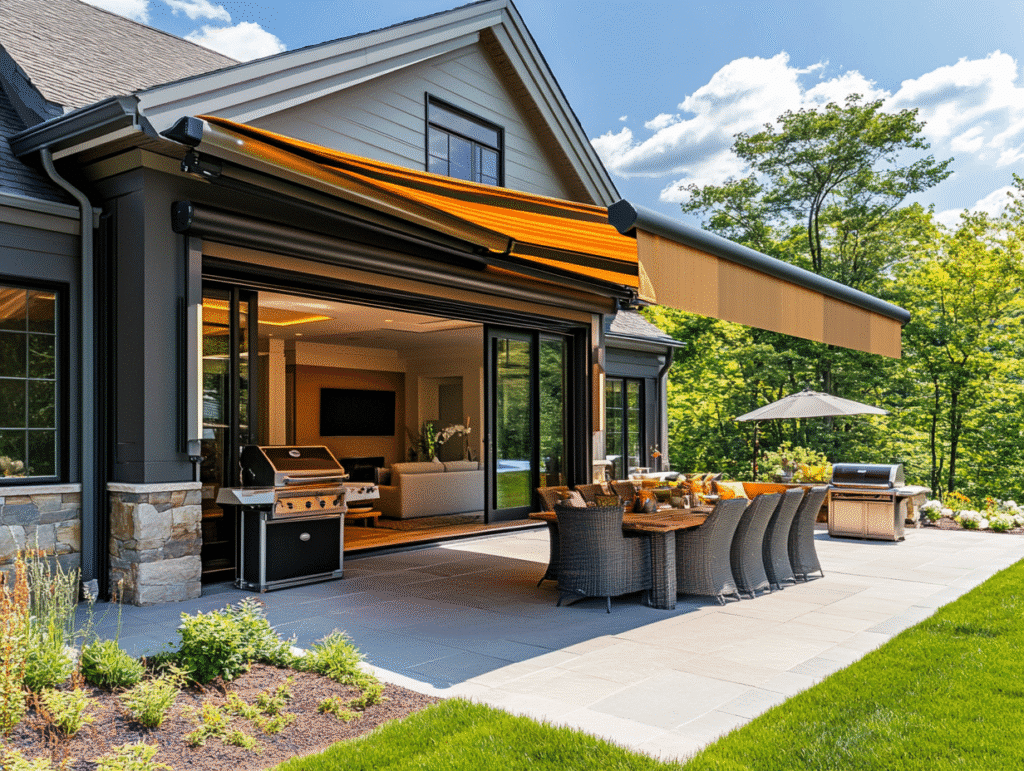
How can I create shade on my patio? Weather protection is the foundation of year-round patio use. This might mean a permanent roof structure, retractable awnings, or portable solutions like umbrellas and pop-up canopies.
Heating and cooling elements extend your comfortable outdoor season significantly. Fire features, patio heaters, and outdoor fireplaces can make cool evenings enjoyable. On the flip side, fans, misters, and adequate shade make hot days bearable.
Storage solutions become even more important when you’re using your patio year-round. You need convenient places to store seasonal items, weather protection gear, and maintenance supplies.
What accessories can enhance my patio space? Flexible furniture arrangements allow you to adapt your space for different seasons and uses. Lightweight pieces that can be easily moved or stored give you options for reconfiguring your space as needed.
Wrapping Up Your Outdoor Transformation
After years of helping homeowners create their perfect outdoor retreats, I’ve learned that the most successful patios aren’t necessarily the most expensive ones – they’re the ones that truly reflect how their owners want to live. The best patio design balances style with functionality, creates multiple ways to use the space, and feels like a natural extension of your home’s personality.
“As Ben Harvey, CEO at Patio Productions, always says: ‘The best patio isn’t the most expensive one or the one with the most features – it’s the one that makes you want to spend time outside. When you find yourself choosing your patio over your living room, that’s when you know you’ve got it right.'”
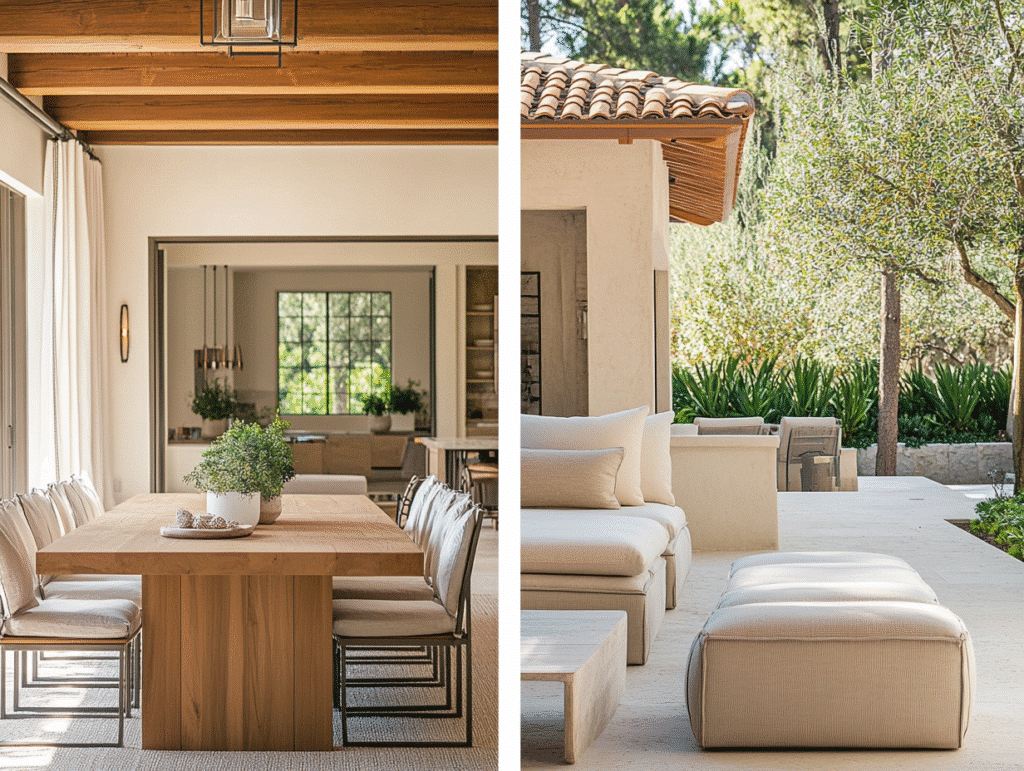
How can I make my patio more stylish? Remember that creating your ideal patio is a process, not a one-time project. Start with the basics – good furniture, adequate lighting, and some greenery – then build from there. If you’re still deciding on furniture materials, wicker outdoor furniture offers one of the best combinations of style, durability, and versatility for most patio designs.
Your patio has the potential to become the most-used and most-loved space in your home. With thoughtful planning and attention to the details that matter most to your lifestyle, you can create an outdoor retreat that provides years of enjoyment. Poolside patios are expected to increase home value by approximately $18,500 on average, but the real value comes from the countless hours of relaxation, entertainment, and connection with nature that your outdoor oasis will provide.
What matters most is creating a place where you genuinely want to spend time, whether that’s reading the morning paper with your coffee or hosting memorable dinner parties under the stars. Trust me, once you get it right, you’ll wonder how you ever lived without your perfect patio retreat.
- 0shares
- Facebook0
- Pinterest0
- Twitter0

